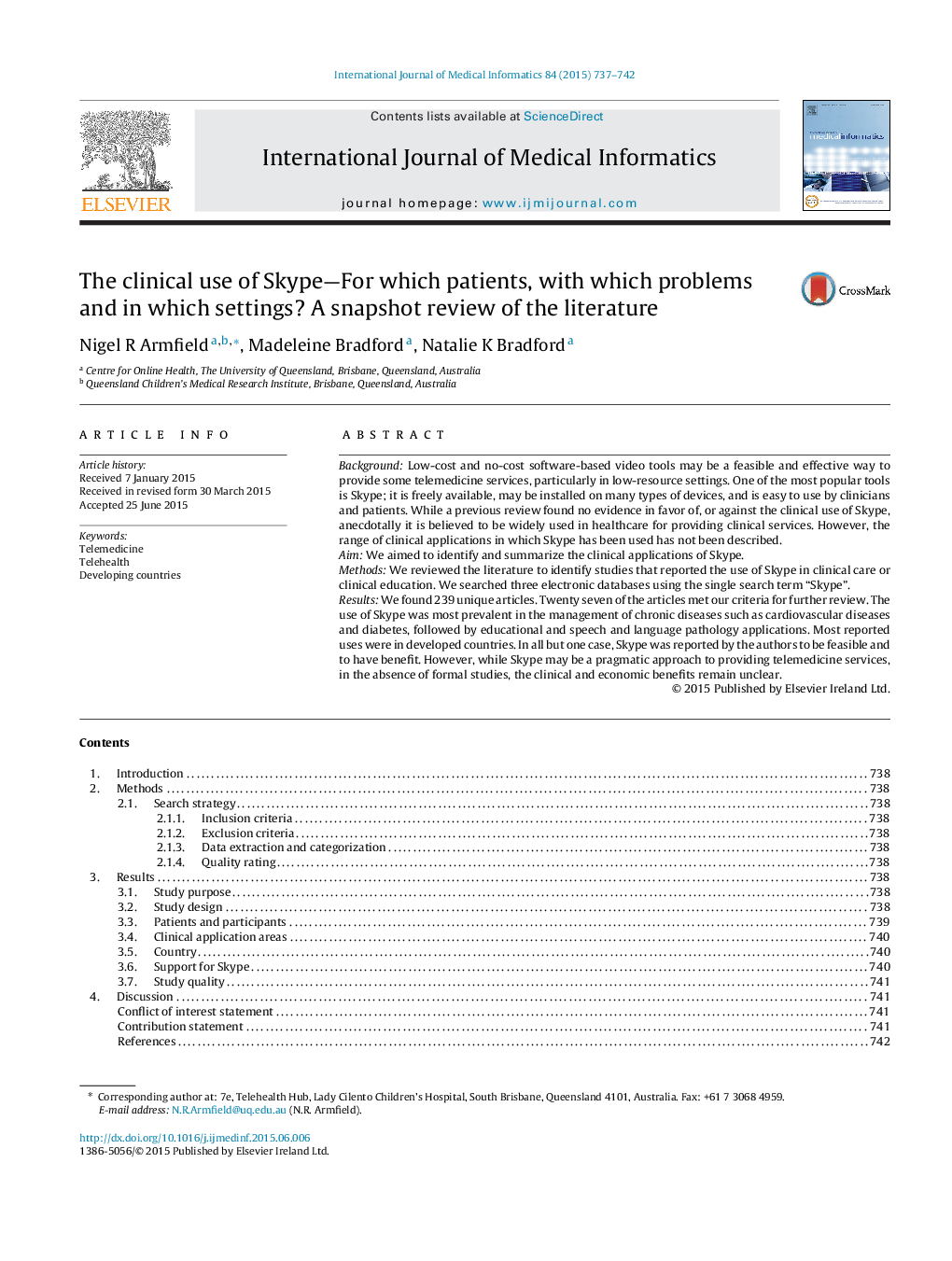| Article ID | Journal | Published Year | Pages | File Type |
|---|---|---|---|---|
| 516811 | International Journal of Medical Informatics | 2015 | 6 Pages |
•We reviewed the literature to identify how Skype is being used in clinical care.•It is used more commonly to provide healthcare for adults than for children.•Chronic disease management is the most commonly reported healthcare use of Skype.•Despite being a low cost approach, use in developing countries appears to be sparse.•The evidence base remains limited but formal studies are increasing.
BackgroundLow-cost and no-cost software-based video tools may be a feasible and effective way to provide some telemedicine services, particularly in low-resource settings. One of the most popular tools is Skype; it is freely available, may be installed on many types of devices, and is easy to use by clinicians and patients. While a previous review found no evidence in favor of, or against the clinical use of Skype, anecdotally it is believed to be widely used in healthcare for providing clinical services. However, the range of clinical applications in which Skype has been used has not been described.AimWe aimed to identify and summarize the clinical applications of Skype.MethodsWe reviewed the literature to identify studies that reported the use of Skype in clinical care or clinical education. We searched three electronic databases using the single search term “Skype”.ResultsWe found 239 unique articles. Twenty seven of the articles met our criteria for further review. The use of Skype was most prevalent in the management of chronic diseases such as cardiovascular diseases and diabetes, followed by educational and speech and language pathology applications. Most reported uses were in developed countries. In all but one case, Skype was reported by the authors to be feasible and to have benefit. However, while Skype may be a pragmatic approach to providing telemedicine services, in the absence of formal studies, the clinical and economic benefits remain unclear.
